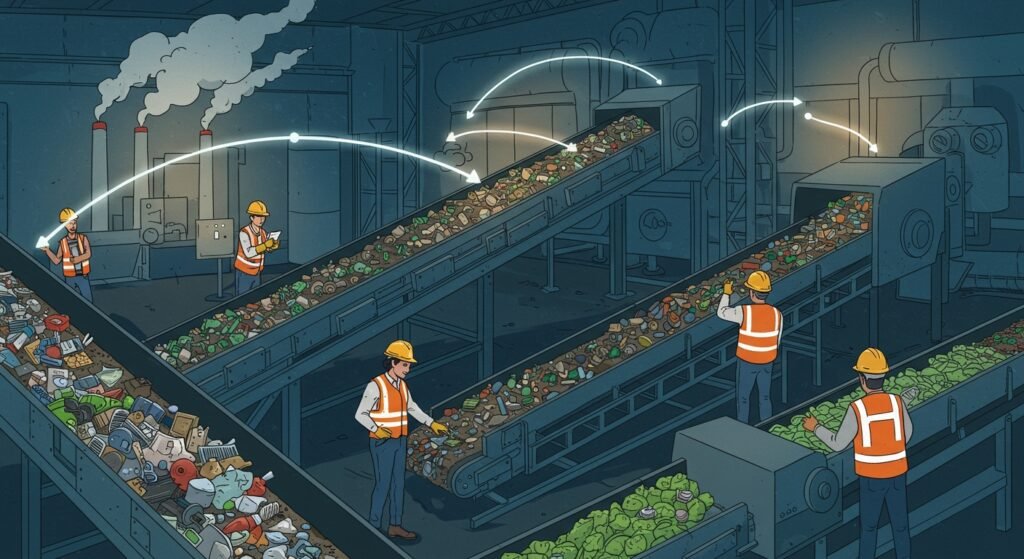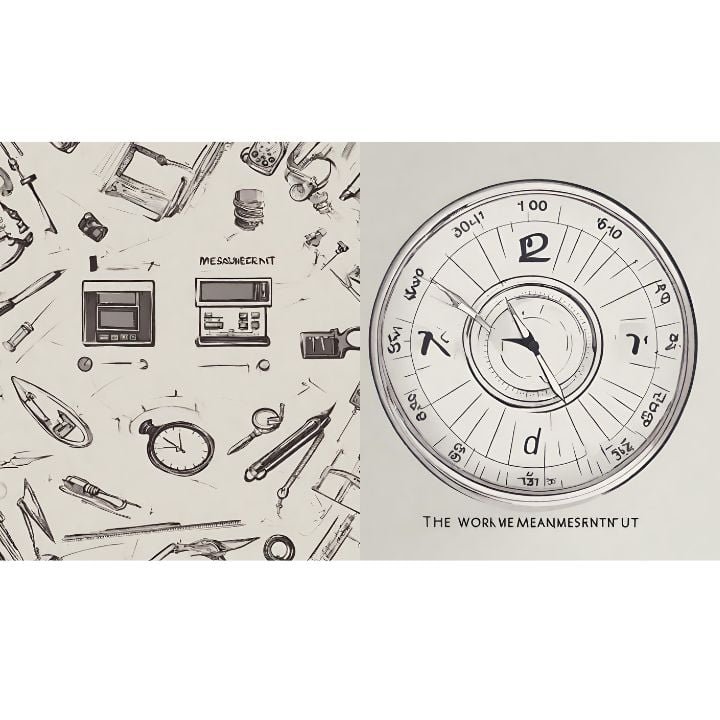Waste-to-Resource Systems in Industrial Engineering: Transforming Waste into Value
In an era defined by resource scarcity and increasing environmental concerns, the concept of waste-to-resource systems has emerged as a critical pathway towards industrial sustainability. Industrial engineering plays a pivotal role in revolutionizing waste management, moving beyond traditional disposal methods to innovative approaches that see waste not as a liability, but as a valuable input for new production cycles. This shift is fundamental to establishing a circular economy, where every discarded item has the potential for regeneration and reuse.
Table of Contents
- The Imperative for Advanced Waste Management
- Key Principles of Waste-to-Resource Systems
- Industrial Engineering’s Role in Optimizing Resource Recovery
- Case Studies and Successful Implementations
- Challenges and the Future of Waste Management
The Imperative for Advanced Waste Management
The global industrial landscape faces immense pressure to reduce its environmental footprint while maintaining economic viability. Traditional linear models of “take-make-dispose” are no longer sustainable, leading to overflowing landfills, increased pollution, and depletion of natural resources. Effective waste management is no longer just a regulatory compliance issue; it’s a strategic imperative for long-term business resilience and social responsibility.
Environmental and Economic Pressures
Industries worldwide generate vast quantities of waste, ranging from manufacturing byproducts to end-of-life products. This waste often contains valuable materials that, if recovered, can significantly reduce the demand for virgin resources and decrease energy consumption associated with primary extraction and processing. Economically, efficient waste management reduces operational costs, mitigates risks associated with resource price volatility, and can even create new revenue streams through the sale of recovered materials or energy.
Key Principles of Waste-to-Resource Systems
Waste-to-resource systems operate on the core principle of converting waste materials into usable forms. This involves a spectrum of strategies, from direct reuse and recycling to more complex processes that transform waste into energy or new chemical feedstocks.
Circular Economy Fundamentals
At the heart of waste-to-resource initiatives is the philosophy of the circular economy. Unlike the linear model, a circular economy aims to keep resources in use for as long as possible, extract the maximum value from them whilst in use, then recover and regenerate products and materials at the end of each service life. This systemic approach is crucial for sustainable waste management practices across all industrial sectors.
Technological Innovations in Resource Recovery
Modern industrial engineering leverages a range of advanced technologies to facilitate the waste-to-resource transition. These innovations are critical for effective segregation, processing, and transformation of diverse waste streams:
- Material Recovery Facilities (MRFs): Sophisticated sorting plants that separate mixed recyclables into distinct material streams like plastics, metals, paper, and glass using mechanical and optical technologies.
- Anaerobic Digestion: A biological process that breaks down organic matter (e.g., food waste, agricultural residues) in the absence of oxygen to produce biogas (a renewable energy source) and digestate (a nutrient-rich fertilizer).
- Pyrolysis and Gasification: Thermal decomposition processes that convert complex organic materials (plastics, tires, biomass) into liquid fuels, syngas, or char in low-oxygen environments.
- Waste-to-Energy (WtE): Incineration with energy recovery, where waste is burned to generate heat and electricity, often combined with advanced pollution control systems.
- Chemical Recycling: Breaking down polymers into their original monomers or other basic chemicals, allowing for the creation of new plastics with virgin-like quality.
Industrial Engineering’s Role in Optimizing Resource Recovery
Industrial engineers are uniquely positioned to design, implement, and optimize waste-to-resource systems. Their expertise in process analysis, system design, logistics, and data management is invaluable. They ensure efficiency, cost-effectiveness, and scalability of these complex systems.
- Process Optimization: Applying lean principles and Six Sigma methodologies to minimize waste generation at the source and improve the efficiency of recycling and recovery processes.
- Supply Chain Integration: Designing closed-loop supply chains where end-of-life products or manufacturing byproducts are systematically collected and reintegrated into the production cycle or used by other industries.
- Data Analytics and Predictive Modeling: Utilizing data to forecast waste generation, optimize collection routes, predict equipment maintenance needs, and assess the economic viability of different recovery methods.
- Facility Layout and Design: Creating efficient layouts for MRFs and processing plants that maximize throughput and minimize operational costs.
Case Studies and Successful Implementations
Across various sectors, companies are successfully implementing waste-to-resource systems, demonstrating significant environmental and economic benefits. From automotive manufacturers reusing scrap metal to food processing plants converting organic byproducts into biogas, the examples are diverse.
Consider the potential for converting common industrial waste streams into valuable resources:
| Waste Stream | Recovery Method | Output Resource |
|---|---|---|
| Plastic Packaging | Mechanical/Chemical Recycling | Recycled pellets, monomers |
| Organic Sludge | Anaerobic Digestion | Biogas, fertilizer |
| Scrap Metal | Smelting, Shredding | New metal alloys |
| Waste Tires | Pyrolysis | Fuel oil, carbon black |
| Electronic Waste (E-waste) | Material Recovery, Refining | Precious metals, plastics |
These examples highlight the transformative potential when industrial engineering principles are applied to waste management challenges. Companies like Interface, with its mission to eliminate negative environmental impact, exemplify how businesses can thrive by adopting circular economy principles.
Challenges and the Future of Waste Management
While the benefits are clear, implementing comprehensive waste-to-resource systems is not without its hurdles. These include initial investment costs, the complexity of sorting mixed waste, market volatility for recovered materials, and the need for supportive regulatory frameworks.
The future of waste management will likely involve greater integration of AI and robotics for sorting, advanced material science for designing easier-to-recycle products, and innovative business models that prioritize product-as-a-service over ownership, encouraging manufacturers to retain responsibility for their products’ end-of-life. Collaboration between industry, government, and academia will be crucial to overcoming these challenges and accelerating the transition to a truly circular industrial ecosystem.
Conclusion: A Sustainable Path Forward
Waste-to-resource systems, driven by the principles of industrial engineering, offer a compelling vision for a sustainable future. By rethinking our approach to waste, we can unlock new economic opportunities, conserve natural resources, and significantly reduce our environmental impact. Embracing advanced waste management is not just an option; it’s an essential step towards building resilient and responsible industries for generations to come.


